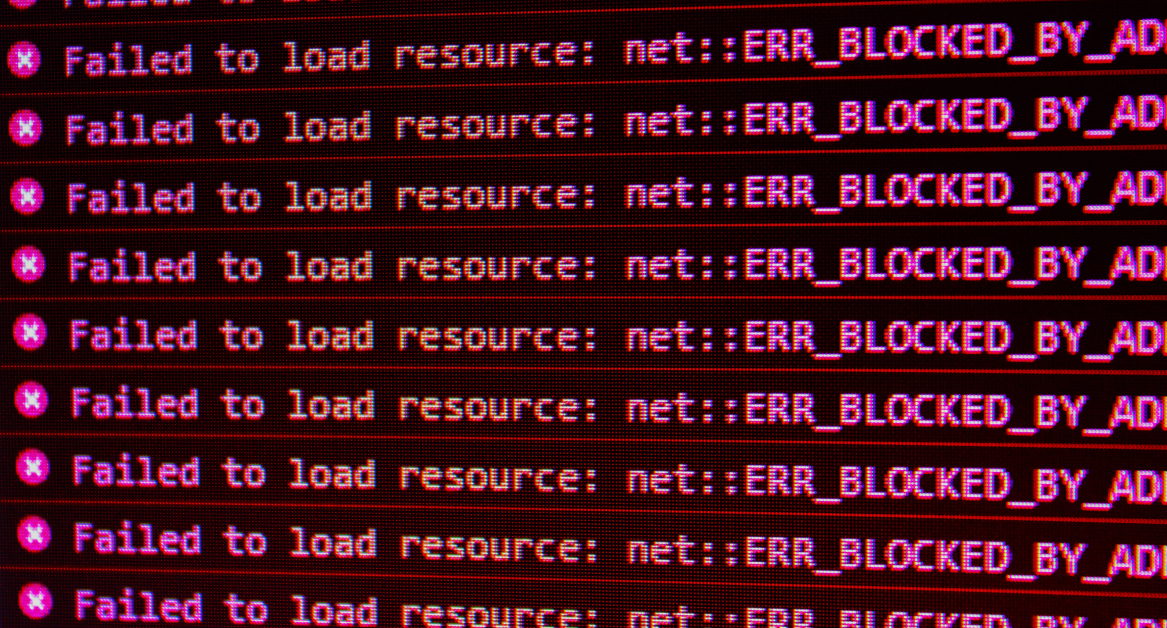IT asset management or, specifically for our article, IT asset tracking can be a daunting task for any organization. The challenges range from managing a myriad of remote mobile devices and software licenses to ensuring compliance and reducing costs.
IT asset tracking, when done right, can be a game-changer. It saves time and money, enhances productivity, and ensures that every piece of equipment is accounted for and functioning as it should. In this detailed guide, we’ll explore the seven common errors companies make in IT asset tracking and how to avoid them.
So, let’s dive in!

Error 1: Lack of a centralized tracking system
One of the most common mistakes companies make in IT asset tracking is not having a centralized tracking system. This oversight can lead to a host of issues, from mismanaged resources to increased operational costs. In the absence of a unified platform, tracking software, hardware, and software licenses becomes a scattered and inefficient process.
The impact of disorganization
Without a centralized tracking system, information about IT assets is often dispersed across various departments and databases. This disorganization not only wastes time but also leads to inaccuracies in asset management. It’s not uncommon for businesses to lose track of their assets, leading to unnecessary purchases and a bloated IT budget.
The power of a unified tracking solution
A unified IT asset tracking system, like the one offered by Esevel, provides a single source of truth for all your asset information. This kind of system streamlines the process of managing assets, ensuring that data about every piece of hardware and software is easily accessible in real time. Centralization reduces the risk of errors, enhances transparency, and facilitates better decision-making.
Error 2: Inadequate documentation and records
The second major pitfall in IT asset tracking is the lack of proper documentation and records. This oversight can lead to a range of issues, from difficulty in tracking the lifecycle of assets to compliance risks. Effective documentation is crucial in maintaining a clear and accurate record of all IT assets, including their status, location, and history.
Importance of thorough documentation
Adequate documentation serves several critical functions in IT asset management:
- Tracking asset history: Documentation provides a historical record of each asset, including purchase dates, maintenance records, and usage history. This information is crucial for making informed decisions about asset replacements and upgrades.
- Ensuring compliance: Proper records help ensure compliance with regulatory requirements and software licenses. This is particularly important for startups and remote teams, where assets are spread across various locations.
- Streamlining audits: With thorough documentation, audits become more straightforward, as there is clear evidence of asset utilization and maintenance.
Common documentation challenges
Many companies fail to maintain comprehensive records, often due to:
- Relying on manual tracking methods like spreadsheets, which are prone to human error and quickly become outdated.
- Not updating records consistently, leads to discrepancies between actual and recorded asset statuses.
- Overlooking the importance of documenting software licenses, leads to potential legal and financial ramifications.
Embracing digital solutions
To overcome these challenges, companies should adopt digital solutions like asset management software. This software automates the documentation process, ensuring that records are always up-to-date and accurate. Features like barcode scanning and mobile device integration simplify the process of updating and accessing records, making asset management more efficient and reliable.
Error 3: Neglecting asset lifecycle management
A common oversight in IT asset tracking is neglecting the aspect of asset lifecycle management. This negligence can have significant repercussions, affecting everything from budgeting to operational efficiency. Asset lifecycle management (ALM) is the process of optimizing the life span of IT assets from acquisition to disposal.
The consequences of neglect
When lifecycle management is ignored, several issues can arise:
- Increased costs: Without proper lifecycle management, companies may continue using outdated or inefficient hardware and software, leading to increased maintenance costs and reduced productivity.
- Compliance risks: Overlooking the end-of-life of software licenses and hardware can lead to compliance issues, as using unsupported or outdated technology often violates industry regulations.
- Inefficient resource allocation: Without a clear understanding of asset lifecycles, companies might invest in new technology unnecessarily or fail to upgrade when it’s most beneficial.
Key components of effective ALM
Effective asset lifecycle management includes:
- Proactive planning: Anticipating the needs for upgrades and replacements based on asset usage and lifecycle.
- Regular audits: Conducting regular audits to assess the condition and performance of IT assets.
- Strategic disposal: Properly disposing of IT assets at the end of their lifecycle, considering environmental and data security concerns.
Implementing ALM strategies
Implementing robust ALM strategies involves:
- Utilizing asset management software to track and analyze the performance and status of assets throughout their lifecycle.
- Establishing clear policies for procurement, usage, maintenance, and disposal of IT assets.
- Training staff to understand the importance of lifecycle management in optimizing asset use and ensuring compliance.
Error 4: Insufficient training and user awareness
Insufficient training and lack of user awareness stand as a major hurdle in the effective implementation of IT asset-tracking systems. When employees are not adequately educated about the processes and tools involved in asset management, it leads to misuse and underutilization of resources.
Impact of inadequate training
The consequences of not providing sufficient training and awareness include:
- Mismanagement of assets: Employees who are not familiar with the tracking system may inadvertently mismanage assets, leading to losses or damage.
- Reduced efficiency: Without a proper understanding of how to use asset management tools, employees cannot utilize these systems to their full potential, hampering overall efficiency.
- Security risks: A lack of training can lead to security breaches, as employees might not be aware of the correct procedures for handling sensitive data associated with IT assets.
Importance of user education
To mitigate these issues, companies need to invest in comprehensive training programs that cover:
- Usage of tracking tools: Employees should be familiar with how to use tracking software and mobile apps for efficient asset management.
- Best practices in asset handling: Training should include guidelines on the proper usage, storage, and maintenance of IT equipment.
- Security protocols: Educating employees on the importance of following security protocols to protect company assets and data.
Error 5: Overlooking regular audits and updates
A crucial yet often overlooked aspect of IT asset tracking is the regular conducting of audits and updates. This oversight can lead to outdated systems, unaccounted assets, and a general lack of oversight over the IT infrastructure.
The risks of skipping audits and updates
Neglecting regular audits and updates can result in:
- Inaccurate asset data: Without regular audits, the data regarding the status and location of IT assets can become outdated, leading to poor decision-making.
- Security vulnerabilities: Failing to update software and hardware regularly can leave systems open to security threats and vulnerabilities.
- Compliance issues: Regular audits ensure compliance with industry regulations, particularly regarding software licenses and data protection.
The need for consistent monitoring
Consistent monitoring and updating are essential for:
- Maintaining an accurate inventory: Regular audits help in keeping an up-to-date inventory of all IT assets.
- Ensuring software integrity: Regular software updates are crucial for security, performance, and compatibility.
- Optimizing asset utilization: Audits help in identifying underutilized or obsolete assets that can be repurposed or decommissioned.
Technology plays a pivotal role in simplifying the audit process. Asset management solutions like Esevel provide tools for easy monitoring and updating of assets. Especially in a remote business setting, these tools can automate the audit process within clicks, making it easier and more efficient to maintain a secure IT environment.
Error 6: Failing to integrate with other business systems
A significant error in IT asset tracking is the failure to integrate asset management solutions with other business systems. This lack of integration can lead to siloed information, inefficiencies, and missed opportunities for optimization.
Consequences of poor integration
Not integrating IT asset tracking systems with other business systems results in:
- Data inconsistencies: When systems are not integrated, data discrepancies can occur, leading to confusion and misinformed decisions.
- Operational inefficiencies: Lack of integration means that processes cannot be streamlined across different departments, resulting in operational delays and inefficiencies.
- Missed analytical insights: Integration allows for comprehensive data analysis, offering insights that can drive strategic business decisions. Without this, opportunities for improvement may be missed.
Integrating for synergy
Effective integration involves:
- Connecting with financial systems: Linking asset tracking with financial systems ensures accurate tracking of costs and depreciation.
- Harmonizing with HR platforms: Integration with HR systems can streamline the onboarding and offboarding processes, particularly in tracking and allocating IT assets to employees.
- Syncing with operations software: This ensures that asset tracking information is consistent with operational data, aiding in seamless business operations.
Error 7: Ignoring security and compliance aspects
Another critical error in IT asset tracking is neglecting the security and compliance aspects of IT asset management. This oversight can lead to serious data breaches, legal penalties, and damage to the company’s reputation.
Risks of overlooking security and compliance
The consequences of ignoring security and compliance in asset tracking include:
- Data breaches: Inadequate security measures in asset management can lead to vulnerabilities, exposing sensitive data to unauthorized access.
- Legal repercussions: Non-compliance with industry regulations, especially concerning software licenses and data protection, can result in legal actions and hefty fines.
- Loss of trust: Security lapses and compliance failures can erode customer and stakeholder trust, impacting the company’s reputation and business prospects.
Prioritizing security in asset management
Ensuring security in IT asset tracking involves:
- Robust data protection: Implementing strong security protocols for data associated with IT assets, including encryption and access controls.
- Regular compliance audits: Conducting regular audits to ensure adherence to industry regulations and software license agreements.
- Employee training: Educating employees about the importance of security and compliance in asset management.
Streamlining IT asset tracking for success
In wrapping up, it’s clear that successful IT asset tracking is a blend of strategic planning and efficient execution. The common pitfalls, ranging from the lack of a centralized tracking system to ignoring security and compliance, highlight the need for a comprehensive approach. Embracing solutions like Esevel’s, which offer real-time tracking, asset lifecycle management, and robust security measures, can significantly enhance the efficiency and reliability of IT asset management.







